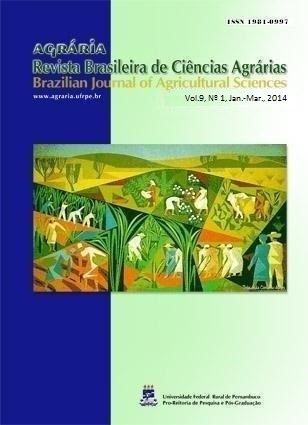Phytosociology of natural regeneration of an urban semideciduous forest fragment (Juiz de Fora, MG, Brazil)
DOI:
https://doi.org/10.5039/agraria.v9i1a3538Keywords:
diversity, secondary forest, urban forest, biological invasionAbstract
Urban forests are an important component of the landscape, being responsible for the conservation of biodiversity in the cities. This study aimed to analyse the phytosociological structure of regenerating tree species in a small urban (2 ha) semideciduous seasonal forest fragment at Juiz de Fora, MG, Brazil. The survey was done on 25 plots of 5 x 5 m, where all the individuals with diameter at breast height (DBH) < 5 cm and height > 1 m were sampled. The number of individuals found was 1066, belonging to 71 species with the predominance of ‘pioneiras’ (47% of species and 69% of individuals). The most representative species were Myrcia splendens, Anadenanthera colubrina, Vismia guianensis, Miconia theizans and the exotic invasive Syzygium jambos, which together amounted 40.5% of the total value of importance. The Shannon diversity index was 3.17 nats. ind-1 and Pielou equability index was 0.74, indicating the existence of an ecological dominance. The detrended correspondence analysis (DCA) detected the presence of strong floristic gradient, associating some shading species (Anadenanthera colubrina and Piptadenia gonoacantha) with exotic Coffea arabica. Even with 70 years of natural regeneration, the results indicated a regenerating community with difficulties of progression to advanced successional stages.
Downloads
Downloads
Published
How to Cite
Issue
Section
License

This work is licensed under a Creative Commons Attribution-NonCommercial 3.0 Unported License.


